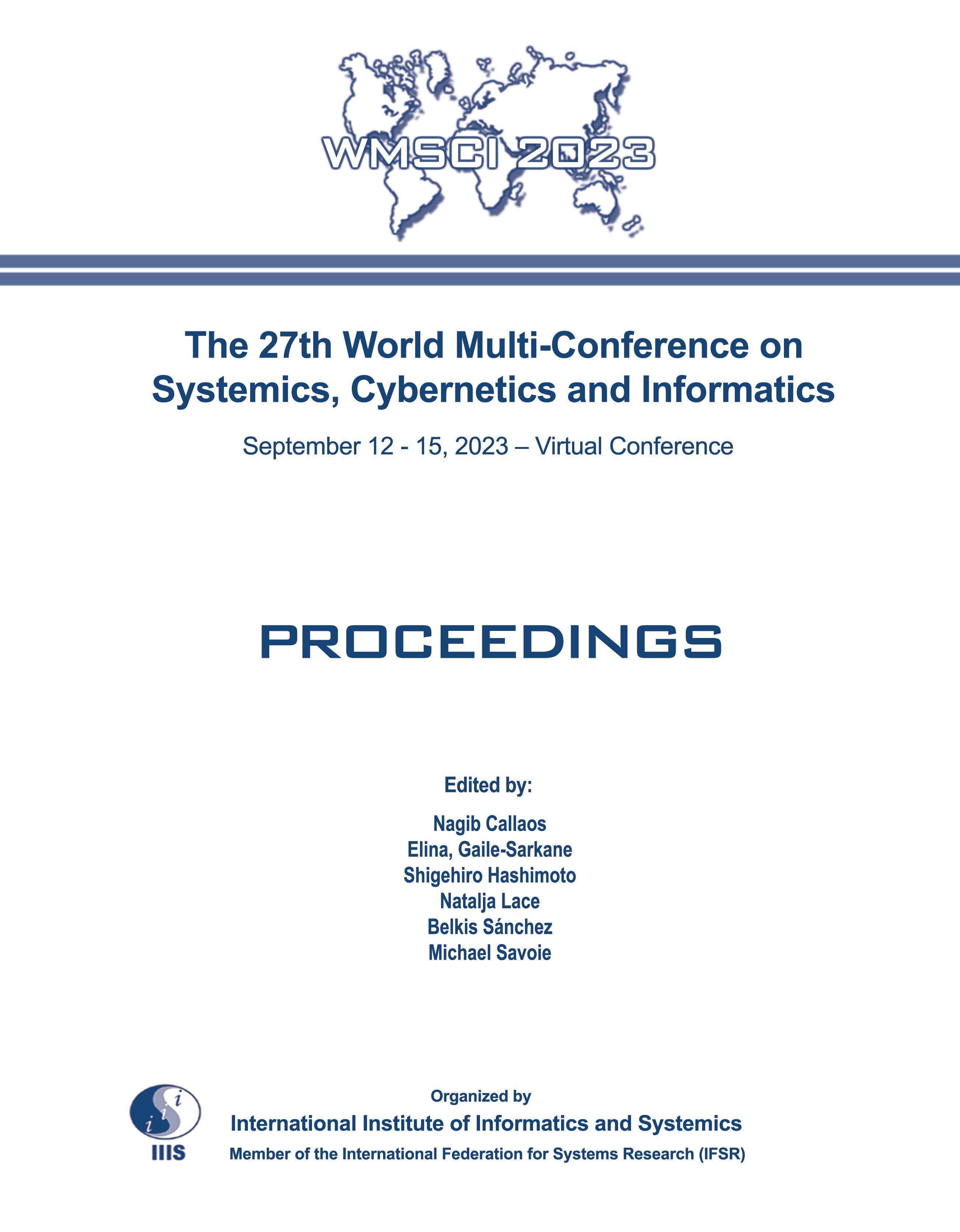2023 Summer Conferences Proceedings

|
Discovery Thinking: A Complex Problem-Solving Technique
Robert Smith, Shahabedin Sagheb
Proceedings of the 27th World Multi-Conference on Systemics, Cybernetics and Informatics: WMSCI 2023, pp. 453-459 (2023); https://doi.org/10.54808/WMSCI2023.01.453
|
The 27th World Multi-Conference on Systemics, Cybernetics and Informatics: WMSCI 2023
Virtual Conference September 12 - 15, 2023 Proceedings of WMSCI 2023 ISSN: 2771-0947 (Print) ISBN (Volume): 978-1-950492-73-2 (Print) |
|
Abstract
Today’s complex problems require interdisciplinary approaches that bring technological advancements alongside societal benefits. In this paper we present Discovery Thinking, a thinking framework that brings sociotechnical awareness to the solution space of complex problems to discover better approaches to achieve a desired outcome. Discovery Thinking provides a method to understand a complex problem space, bound it, and utilize the Discovery Thinking Four-Set Assessment to evaluate it. The initial step requires analysis of the problem space to identify a system which can be improved or replaced by an enabling capability. The enabling capability may present itself as a hardware or software solution, process improvement, or service offering. To refine a solution concept, the scope of the capability requires bounding to one or more applications and performance criteria. Bounding is achieved by developing artifacts of the existing system composition. The Four Set Assessment consists of sequential development of Desirability, Feasibility, Viability and Sustainability attribute sets and adds artifact development approaches for evaluating the solution concept. Artifacts developed within the Four Set Assessment include the solution approach, the Concept of Operations, creation of system architectures, identification of risks and issues, ability to design, ability to manufacture, methods of verification and validation, development of business plans and assessment of sustainability constraints such as legal, regulatory or operational barriers. The knowledge developed during artifact construction provides foundation to the solution concept and iteratively matures an innovation. Grounded in the results from implementation in a large polytechnic university in the United States, the Discovery Thinking output reveals a desired outcome that is enabled by innovation in the solution concept. In this context, innovation does not require developing new technology. Instead, it emphasizes integrating existing technology or approaches in a novel way to achieve an innovative solution concept.
|
||




